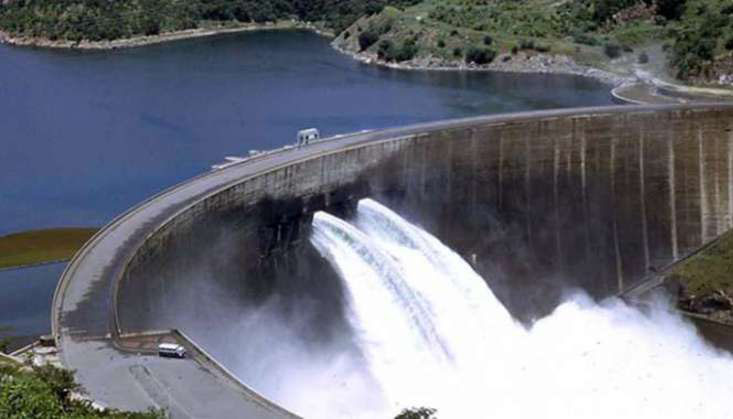
The Sunday Mail

Golden Sibanda
Kariba Dam’s water level has risen markedly from a critically low level of about 20 percent last year to 83 percent; raising hope that significant benefits will continue to accrue from Kariba South Power Station, which now has extended capacity.
Kariba South, located on the southern bank of the Kariba Dam, has new installed capacity of 1 050 megawatts following the extension of its capacity by a further 300 megawatts, undertaken by Chinese company Sinohydro at a cost of $533 million.
Sinohydro has also been contracted to increase Hwange Power Station’s 920MW design capacity by 600MW and the project will cost about $1,5 billion, with draw downs on the loan provided by China Eximbank having started last week.
President Mnangagwa commissioned units 7 and 8 in March at a ceremony attended by senior Government officials, including Vice President General Constantino Chiwenga (Retired), Finance and Economic Planning Minister Patrick Chinamasa and Energy and Power Development Minister Simon Khaya Moyo.
Kariba South Power Station is critical to Zimbabwe’s energy mix, as it supplies the country with the cheapest power at about two to three cents per kilowatt hour and has a design mechanism that allows for rationalisation of output, depending on the level of demand.
Besides, following its capacity extension from 750MW, the power plant is now Zimbabwe’s biggest and most reliable power station, given also that Hwange Power Station, which has capacity for 920MW, can only generate 550MW at most.
This is because Hwange Power Station has outlived its design lifespan of 25 years and its units are now prone to frequent break downs.
Following the El Nino induced drought that hit most parts of southern Africa, predominantly the vast catchment area of the Zambezi River, fears had started to build that the power station’s extended capacity and the investment could go waste.
Kariba South Power Station depends entirely on the water allocated from the Kariba Dam, which sits on the Zambezi River and is shared between Zimbabwe and Zambia.
A significant drop in the water level therefore affects power generation at the power plant. In fact, the Zambezi River Authority (ZRA) rations the water that is used for electricity generation by both the Zimbabwe Power Company and Zambia’s power utility, ZESCOM.
ZESCOM generates power at the Kariba Dam on the northern bank.
An update provided by State power utility Zesa and its power generation arm showed that Kariba Dam’s water level had risen significantly, since the El Nino induced drought of 2016, to 486,45 metres as at June 6, 2018; equating to 82,66 percent capacity of the giant lake’s live water usable for power generation.
Zimbabwe and Zambia draw water from the dam at live water capacity to about 475 metres, while all the water below this level is considered dead water, unusable for purposes of power generation; otherwise the two power utilities would deplete the lake.
“The lake level at Kariba (Dam) as of June 6, 2018 was 486,45 meters, which equates to 82,66 percent full,” said ZPC in e-mailed responses to an enquiry, also revealing that 15 billion cubic meters was allocated to ZPC Kariba by ZRA at the beginning of the year.
“A review was carried out by the Joint Operations Committee after the first quarter (2018) and the allocation was increased to 19,5 billion cubic meters from the 2nd quarter of 2018,” the power utility said.
Unconfirmed reports indicated that Zimbabwe and Zambia’s State owned power utilities use an average of 1 centimetre per day for power generation, meaning at the current lake water level, the dam can be used for almost two years.
The Zimbabwe Power Company (ZPC), Zesa Holdings’ generation arm, said since the Kariba South extension project was completed in March this year, Kariba had been able to increase production at peak to 1000 MW.
The State power utility said, “Current average internal (power) generation stood at 1 288MW from ZPC while demand averaged around 1 600MW and has been slowly creeping up due to the current winter spell as temperatures are dropping and heaters, water heating and air conditioners are increasingly adding on to the load.”
Zimbabwe spends significant amounts of scarce foreign currency, about $10 million a week, on importing power from the region to bridge the gap between demand and local generation capacity.
Government is pursuing a number of initiatives through public and private sector led initiatives to increase internal power generation, ahead of an anticipated boom of the currently constrained economy.
These include Batoka Gorge, jointly pursued by Zimbabwe and Zambia, and methane gas projects being developed by independent power producers in Matabeleland North.
Also, Government has issued several generation licences to independent power producers for construction of solar power projects that include the Gwanda Solar farm (Intratrek Zimbabwe/CHiNT Electric, Insukamini (ZTE Corporation) and Munyati (Number 17 Metallurgical China).
The three will churn out a combined 300MW.





